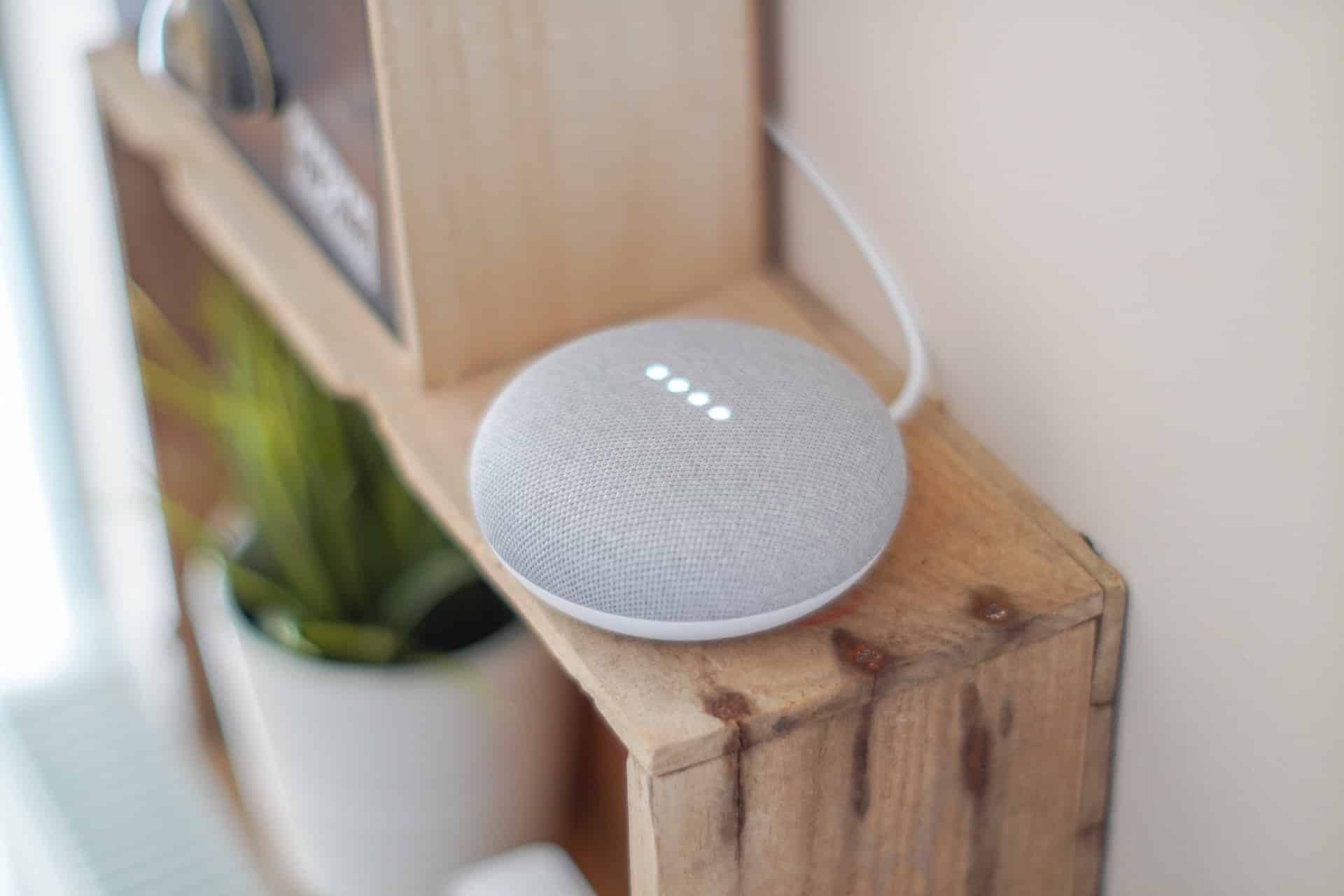Dive deep into the PESTLE analysis of the Smart Home Market to uncover key factors shaping its future growth and development.
Would you believe if someone had told you a few decades ago that there would be houses in the future where you could turn the lights on by telling the house to do so?
I am sure you would not have believed that. Well, here we are. Today there are millions of smart homes across the globe that are fully automated.
In these homes, you can carry out the usual stuff, such as turning the air conditioners on or turning the lights off through voice commands or with the help of your smartphone. Isn't that cool?
The purpose of smart homes is to make our lives more convenient and increase the overall quality of our lives. Moreover, In smart homes, people can monitor their homes on their smartphones, and break-ins can be avoided.
Since smart homes are becoming common and people are adopting this concept, we have decided to conduct a PESTLE Analysis of The Smart Home Market.
The PESTLE analysis of the smart home market will enable us to analyze what external factors impact the smart home market.
However, before we proceed further and conduct the PEST analysis, let's discuss the smart home market a bit.

We have already discussed that smart homes are fully automated homes with human interactive devices that carry out tasks either through voice commands or through commands given through a smartphone that were carried out by humans manually.
There are different types of smart home devices, such as home security devices. These devices include security cameras, smart locks, and alarm systems. All these devices ensure that home security is up to the mark.
Moreover, there are entertainment and media-related devices installed in smart homes. For example, smart TVs and audio systems can be overrated through voice commands or a smartphone's help.
There are other smart home devices that are pretty famous. For example, health and wellness devices, energy management devices, etc.
The concept of smart homes began in the 1960s when the first smart home appliance was made. This device sets the house temperature and turns appliances on and off. However, it wasn't marketed properly.
From there onwards, smart appliances were introduced in the market. Over the years, more technological developments occurred, and smart appliances became more advanced.
In the early 2000s, the concept of smart homes was introduced. In a few years, it became affordable, so people started purchasing smart homes.
As technology was enhanced, more smart devices were introduced, and smart homes became more automated. Currently, the smart home market is one of the markets that is growing at a very fast pace.
It is estimated to generate revenue of $139 billion in 2023. Moreover, the market is expected to grow at 28.8% by 2027.
The smart home market is the biggest in the USA. A huge portion of its revenue is generated from the US.
Now that we have analyzed the smart home market in detail and discussed what a smart home is, let's proceed and discuss what a PESTLE analysis is.
PESTLE analysis is a tool businesses use to identify the external factors that impact any business or market. PESTLE analysis framework highlights different political, social, economic, environmental, legal, and technological factors that impact a company or market.
In this section, we will look at how different external factors affect the smart house market. Let's proceed and conduct the PESTLE analysis of the smart house market.
Political Factors That Impact Smart Home Market
Political factors are linked with government policies and political scenarios. Different political factors impact different markets. This section will discuss how political factors affect the smart home market.
Smart homes require the Internet since all the devices in the home are connected to the Internet. The government can provide access to the Internet if they start investing in digital infrastructure such as 5G technology.
Such digital infrastructure can influence people to invest more in the smart home market, making the market grow.
Also, suppose the government supports the smart home market by providing subsidies and announcing tax relief schemes for the owners. In that case, more people will be driven to have a smart home. As a result, the market will flourish.
Furthermore, smart homes have smart devices installed in different parts of the world. If the government reduces tariffs on the import of smart appliances for smart homes, the smart home market will grow, and people will opt for smart homes.
Besides that, the government can make policies through which it is easy for individuals to mortgage smart homes instead of conventional homes. This will impact the smart home market positively and help it grow.

Economic Factors That Impact the Smart Home Market
Economic factors are the factors that are linked with a country's or the global economy. In this section, we will look at how different economic factors impact the smart home market.
Interest rates in an economy have a serious impact on the smart home market. Interest rate impacts the cost of borrowing in an economy. If the interest rate is high, the cost of borrowing gets high.
However, if the interest rate is low, the cost of borrowing gets low. As a result, more people can easily borrow money from the banks.
Low-interest rates have a positive impact on the smart home market. Whenever there are low-interest rates, it will be easy for people to borrow money from the banks to purchase a smart home.
Hence, as the interest rate drops in the economy, the smart home market will grow since more people will invest in it.
Besides that, the inflation rate greatly impacts the smart home market. Suppose the rate of inflation is already high in an economy. In that case, it means that the basic commodities would be expensive at that time.
Hence, people would save money to buy basic necessities and avoid investing in smart homes. As a result, the smart home market will shrink in periods of high inflation.
Furthermore, economic recessions also affect the smart home market. In an economy with a recession, people's purchasing power falls. In such economies, people won't be able to purchase a smart home.
Hence, during economic recessions, the smart home market will shrink. However, during economic prosperity, the smart home market will grow since people will have money to invest in the smart home market.
Social Factors That Impact the Smart Home Market
Social factors are the factors that are associated with social and cultural factors. In this section, we will look at how different social factors impact the smart home market.
Various social factors impact the smart home market. The trends in society significantly impact the smart home market.
If people start to find smart homes cool and conventional homes boring, the masses will opt for smart homes, and the smart home market will flourish.
Besides trends, every society's literacy rate and education level impact the smart home market differently. For example, in a society with a low literacy rate, people will find living in a smart home difficult. Hence, the demand for smart homes would be less in that society.
Moreover, homeownership rates also impact the demand for smart homes. In a society where most people are tenants, not homeowners, the demand for smart homes would be low since only a few people who own homes can buy a smart home.
Other than that, urbanisation also impacts the smart home market. In a society where a small area is urbanized, only a few people might have smart homes because smart homes require electricity and the Internet. If most of the area is underdeveloped, people living in rural areas can't have a smart home.

Technological Factors That Impact the Smart Home Market
Technological factors take into account technological innovations that impact different markets. This section of the PESTLE analysis will discuss how different technological factors impact the smart home market.
The concept of a smart home is possible only by including smart devices that are functional through the Internet. Hence, the Internet is essential to make smart home function.
This is why the Internet is one of the most significant technological factors that impact the smart home market.
5G is now being introduced in different parts of the world. This will make the Internet fast and reliable. Hence, it will improve the experience of smart homeowners. The launch of 5G will further help the smart home market grow since people look forward to buying smart homes.
Besides that, the latest technological developments, such as AI, help smart devices memorize human behaviors, improving the user experience. For example, voice assistants such as Google Assistant and Amazon Alexa use AI for natural language processing.
Besides that, social media has emerged as a platform that transfers information globally. As people become aware of smart homes, they opt for them.
Hence, smart homes are being marketed through different social media platforms. This is helping the smart home market to grow.

Legal Factors That Impact Smart Home Market
Legal factors take laws and the legal framework of a country into account. This section will examine how different legal factors impact the smart home market.
Different laws impact the smart home market. For example, data protection laws have significantly impacted the smart home market. Earlier, when such laws didn't exist, people were reluctant to opt for smart homes because they feared getting their private data leaked.
However, after the data protection laws came into existence, people opted for smart homes since they now feel protected by the law.
Similarly, cybersecurity regulations have made people living in smart homes feel safe. Governments across the globe have made strict cybersecurity laws that prohibit the hacking of devices. This has made smart homeowners feel.
Moreover, marketing and advertising laws regarding smart homes made the advertising more transparent since these laws clearly state that while marketing a smart home, claims about the devices' capabilities, benefits, and features must be true and not misleading.
Environmental Factors That Impact Smart Home Market
Environmental factors are related to the natural environment. This section will discuss how different environmental factors impact the smart home market.
As discussed in the earlier sections, devices in a smart home significantly rely on the Internet to operate. However, as global warming increases yearly, the frequency of natural disasters increases yearly.
One of the drawbacks of natural disasters is that they damage the infrastructure and disrupt internet connection. Hence, in a natural disaster, the internet connection may get disrupted. In that case, people living in smart homes will experience inconvenience.
Moreover, smart homes also rely on electricity. In case of a natural disaster where the electricity supply gets disrupted, the smart devices installed in smart homes won't function.
Moreover, as the smart home market grows, the electricity demand will also grow since smart homes require a lot of electricity. The increase in the electricity demand will be met by producing more electricity, probably through fossil fuels, which will cause air pollution.
Hence, environmentalists may soon protest against smart homes since they are indirectly causing air pollution.

PESTLE Analysis of The Smart Home Market: Final Word
The smart home market is an emerging market that comprises fully automated homes in which smart devices are installed that carry out tasks that people used to do manually, such as turning the lights off and playing music.
The smart home market started to develop over the years. Currently, the market is worth billions of dollars. At the moment, the US has a large percentage of smart homes.
Since the smart home market has the potential to become a trillion-dollar market, today, we have conducted its PESTLE analysis to see what external factors impact the operations of the smart home market.
If you enjoyed reading this PESTLE analysis and want to read more about it, take a look at more examples here.


